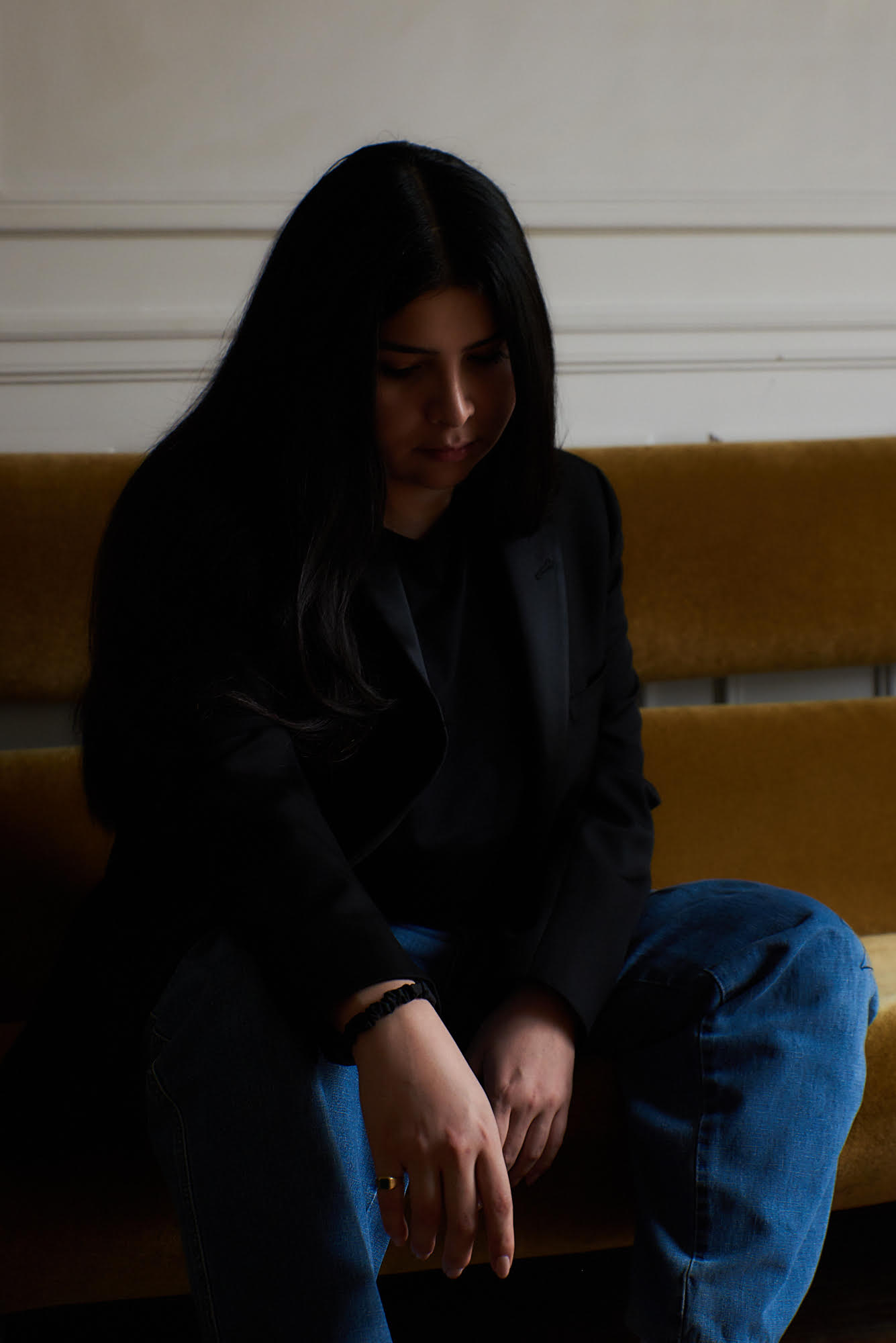
After finding creative freedom abroad, Serpas has spent the past year reconnecting with her home, culminating in a powerful exhibition at Maxwell Graham in the Lower East Side that staged a new way forward for painting—while a concurrent show in Paris did the same for sculpture.
“The works, which were all made in the past year, appear as if they were plucked from some dilapidated corner of the future, remnants of a past not yet realised or artefacts of a life yet to be lived.”
Ser Serpas has spent her last few years in flux, travelling throughout Europe in search of a new context to live and work outside of the familiar. Her art fluctuates depending on where she is, contracting and expanding, shaping itself to the studio space and materials she finds on the street. Now, after almost a year back in New York, she is reconnecting with what it means to call a place a home.
The young multidisciplinary artist was born in Los Angeles and came into her own in New York City while studying art at Columbia; then, she moved abroad. She has worked between New York, Tbilisi, Geneva, and Paris—she recently relocated from the latter, where she completed a site-specific installation currently on view at the Bourse de Commerce through 22 January 2024. (An exhibition earlier this year at the Swiss Institute saw Serpas’s time in Paris re-contextualised in New York.)
Serpas gives discarded objects—fabric and furniture found on the street—a second life. Often, when she completes an installation, she returns the objects where she found them. A roughness from Serpas’s sculptures is transposed to her paintings: heavy, large-scale canvases acquire dirt as the artist drags them across the floor of her studio, and paintings are smudged and imprinted through a monotype process in which Serpas presses the still-wet paintings together to create a stamp-like effect, forming an undercurrent of sameness across the distinctly individual works. While her work resists singular interpretation, her materials offer windows into her world by way of where they were sourced.

For the last two months on the Lower East Side, in the back of Maxwell Graham’s gallery, Serpas’s intimate and ineffable solo exhibition has offered a new, condensed look at the artist’s sprawling practice. A lone, white, room-like box appears to defy gravity. Upon closer look, it is propped up atop rows of sawhorses flanked by buckets and paint-splattered footstools. Serpas’s enigmatic canvases, 16 to be exact, are displayed along its exterior. An additional painting rests opposite the tableau, propped against a wall.
“The young artist has built worlds, staged performances and displayed her poetry, yet here her paintings have risen as ambassadors of her multifaceted practice.”
Human-like forms are rendered in muted, earthy tones with blood reds and pale yellows. The works, which were all made in the past year, appear as if they were plucked from some dilapidated corner of the future, remnants of a past not yet realised or artefacts of a life yet to be lived.
While the artist often uses poems as names, here they are all untitled; anonymous, they resist description. In the past, references have been culled from her personal iPhone camera roll and plastic surgery transformations documented online—now, the artist distorts her lens further, drawing from models generated by artificial intelligence.

At Serpas’s exhibition “Tool,” which ran until 9 December at Maxwell Graham, bodily forms give way to abstract shapes. Limbs and feet and hands morph into each other and out of discernment. Heads are cut out of frame; bodies are ephemeral. In one image, a woman appears to be giving birth or expunging a mass. The young artist has built worlds, staged performances and displayed her poetry, yet here, her paintings have risen as ambassadors of her multifaceted practice.
“In a soft and tender carnage, her singular assemblage has absorbed her canvases—or maybe the inverse is true.”
In a soft and tender carnage, her singular assemblage has absorbed her canvases—or maybe the inverse is true. At the back of the box, a missing fourth wall gives way to a window or a portal into the artist’s interior world. Images contract and double down, half-concealing the fleshy forms held within. A chair sits inside, angled towards a crouching woman rendered in muted tones of grey. A few planks of wood and long cardboard rolls lean side-by-side in the back, giving the otherwise sparse space a slightly lived-in feel. Through Serpas’s compact installation, paintings hold centre stage, and the artist acts as director.

In Paris, narratives take physical form across the wide-open space for her concurrent exhibition “I fear / J’ai peur” at the Bourse de Commerce. A haunting waltz scored by ambient musician James Leyland Kirby, best known for his project The Caretaker, animates the room. Tables, chairs, and other objects found in the streets (and baptised in a rave party performance leading up to the opening) are shrouded in translucent white sheets and large canvases are draped along a clothesline.
The Paris installation alludes to a rupture in the house-as-place-to-entertain trope, brought on by war and coloured by loss. Inner musings on permanence fuse with references to Alejandro Amenábar’s psychological horror The Others, 2001. Should we fear these ominous shapes? No matter how much of an explanation Serpas’s exhibitions offer, new questions arise at every turn.
Words by Meka Boyle






